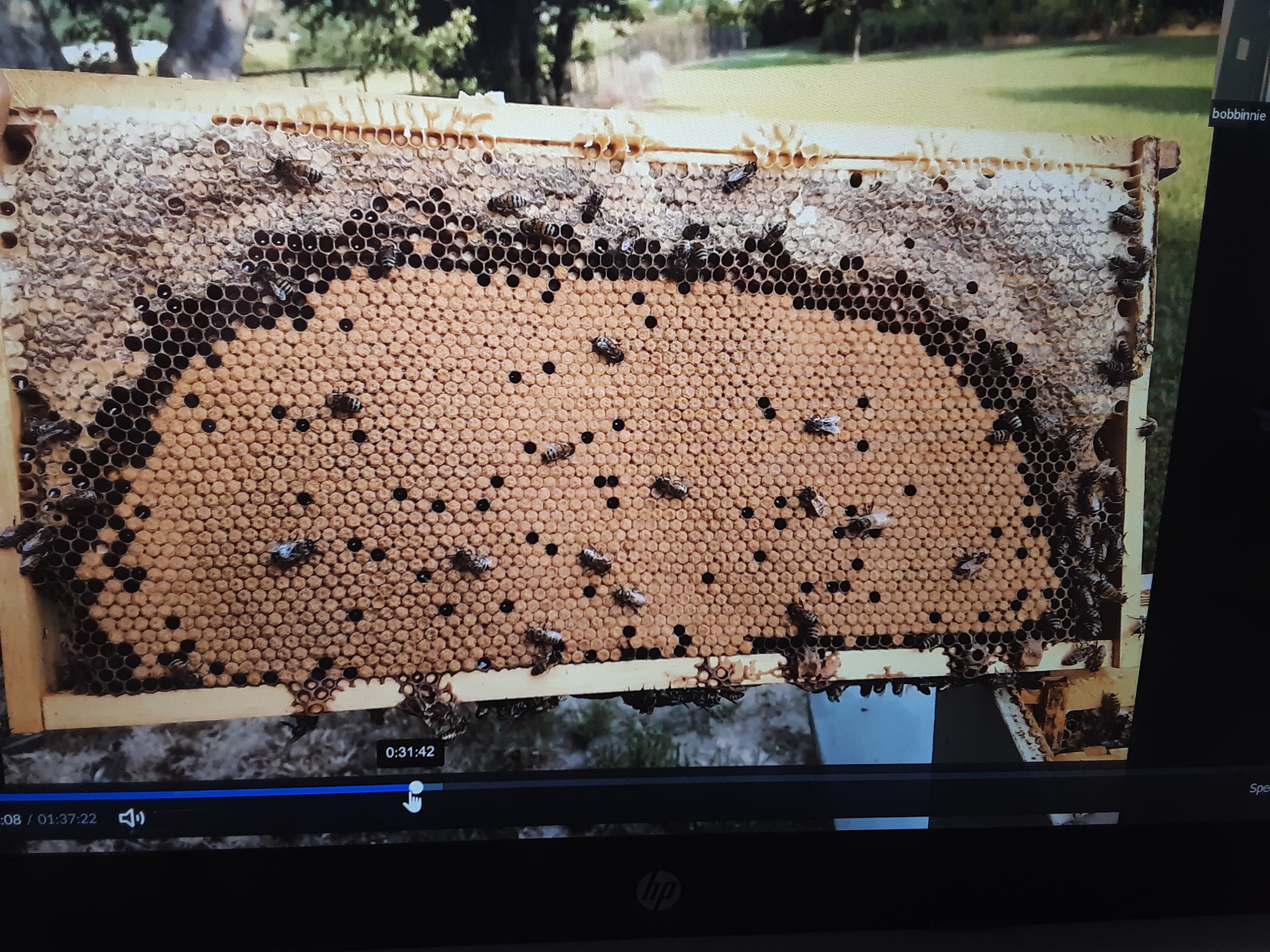Difficult to diagnose. CappedCapping:
the covering that bees add over comb cells containing fully ripened honey or to cap brood that has reached the pupal stage; bee bread cells are not capped cells opened and pupae showing evidence of being removed and eaten. Imbalance of brood from the normal ratio of roughly 1 egg to 2 larvae to 4 capped brood is evidence that larvae are not being properly fed.
cells opened and pupae showing evidence of being removed and eaten. Imbalance of brood from the normal ratio of roughly 1 egg to 2 larvae to 4 capped brood is evidence that larvae are not being properly fed.
Bees on occasion will cannibalize brood. It is a normal means by which adult population can regulate their resources during spring, during times of disease (European foulbrood and American foulbrood, for example), and is a major means that hygienic bees use to control varroa mites. This is fairly common during spring buildup, when pollen income is disrupted by poor weather.
Cannibalism is also seen in instances of diseased brood and starvation. Instead of a solid pattern of capped brood, the pattern is spotty. Hygienic bees remove brood that is infested with varroa mites, especially in the fall months. Partially eaten pupae may be especially evident in parasitic mite syndrome (PMS) colonies. New evidence suggests cannibalism of pupae might spread deformed wing virus, leading to colony collapse.
Drone brood is heavily cannibalized in the fall.
weak spring colonies; disease conditions; PMS
Posada-Florez F, et al. 2021. Pupal cannibalism by worker honey bees contributes to the spread of deformed wing virus. Scientific Reports 11:8989. https://www.nature.com/articles/s41598-021-88649-y
Seifert P, Buling N and Grunewald B. 2021. Honey bee behaviours within the hive: insights from long-term video analysis. PLoS ONE. https//doe.org/10.1371/journal pone 0247323
Oliver R. 2015. Understanding colony buildup and decline: Part 6. Scientific Beekeeping. Accessed 2023. https://scientificbeekeeping.com/tag/rainy-weather/
“Honey bee hygiene: Cannibalism”. YouTube, uploaded by ApisProtect, 15 April 2021. https://www.youtube.com/watch?v=m_PPDFMgQV8